Top Photo: Larva of eastern tiger swallowtail butterfly.
Many insects have physical features which tend to disguise themselves or to make themselves look larger or more intimidating. Eastern tiger swallowtail caterpillars have “false” eyes on the top of their thorax to perhaps convince would be predators they’re snakes, or at least, that they can see them coming.
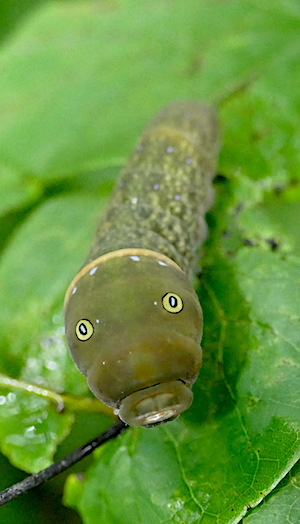
The individual in the photos is ready to crawl off to find a secure location to pupate. Would you think twice about picking up this caterpillar?
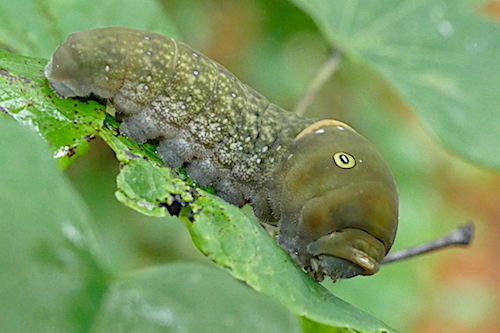
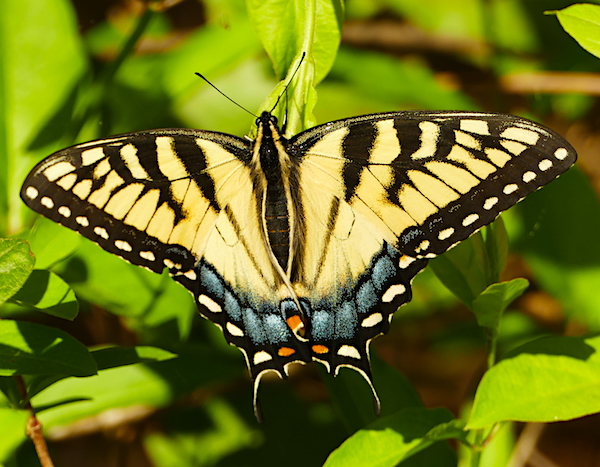
Another local insect that uses this same tactic is the eyed elater, or eyed click beetle.
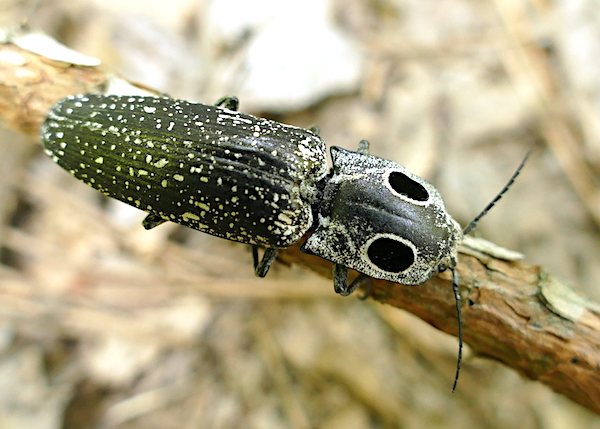
The large white-encircled black “eyes” are just for show. The real eyes of this large click beetle are just above the antennae.
I only see these beetles during spring to early summer. Their larvae eat the larvae of wood boring beetles. They’re harmless.
Pick one up. You might just learn where the name click beetle comes from.
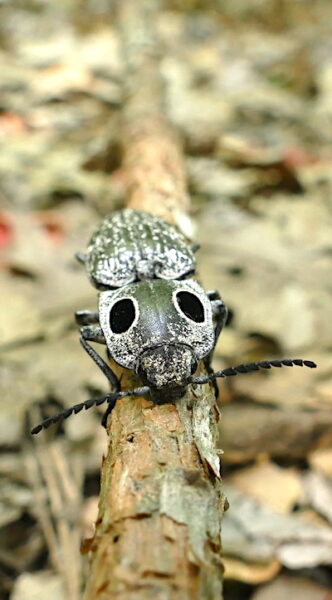
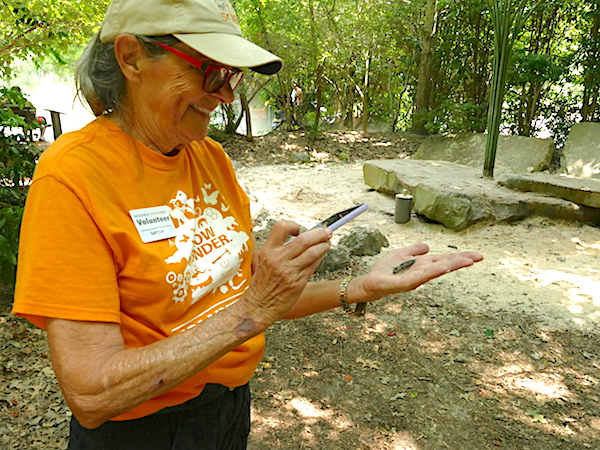
While watching for butterflies in the Butterfly House garden, I noticed a small metallic fly standing on a rose leaf next to the path. It was a long-legged fly, probably in the genus Condylostylus.
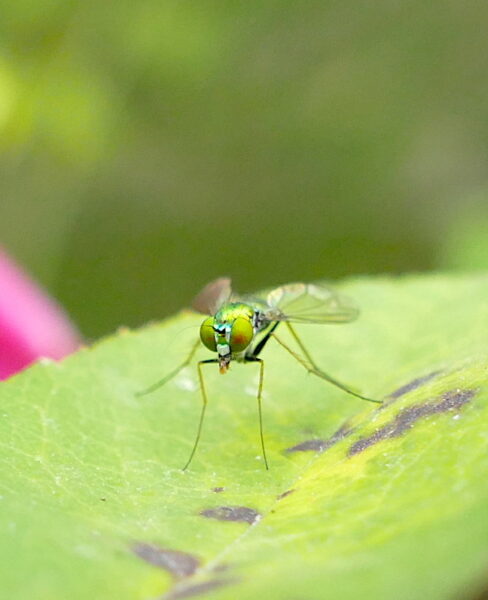
These flies are predatory and eat smaller invertebrates like mites and aphids. Aphids seem everywhere, but anyone who has grown roses knows those plants attract aphids. A rose bush is a good place to look for long-legged flies.
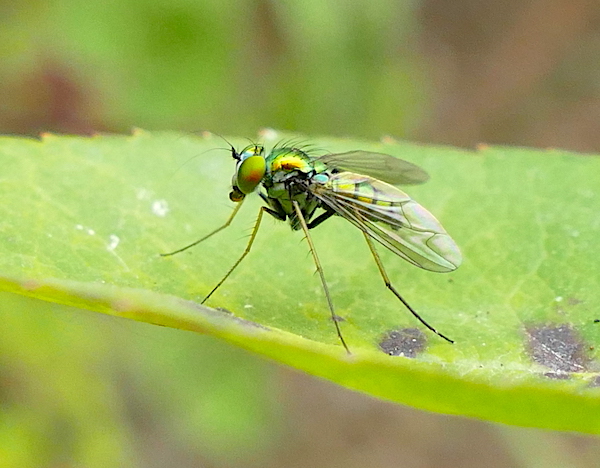
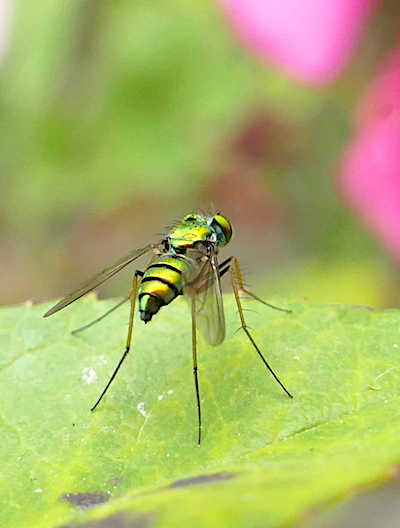
As talked about on this blog in previous posts, milkweed attracts many different insects, Most are brightly colored and easy to pick out against the green of the plant. The red milkweed beetle in the photos here was trying its best to remain concealed. Even though they’re bright red to ward off predators, and toxic to ingest, they still attempt to hide when approached.

Three things give away the beetle’s whereabouts. First, the milky substance draining from the leaf (these beetles typically pinch the main vein of the leaf they are about to browse upon). Second, you can see at least four of its six feet through the leaf. And lastly, the beetle’s antennae stick out above the leaf.
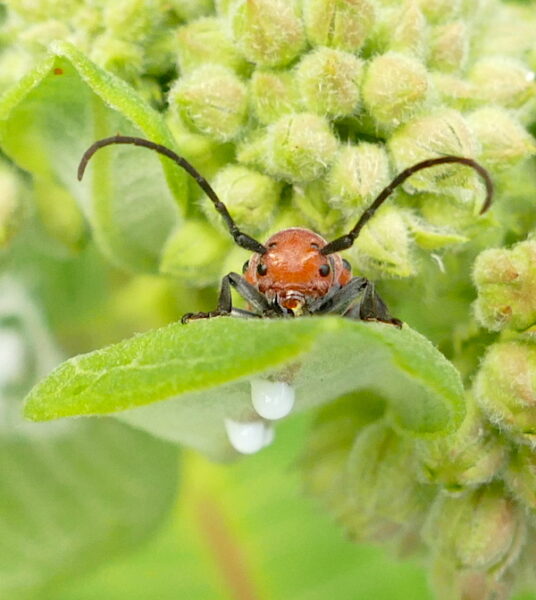
There’s always something interesting going on outdoors, you just have too be there to see it!
Still learning my insects, good, bad & tolerated. Thank you